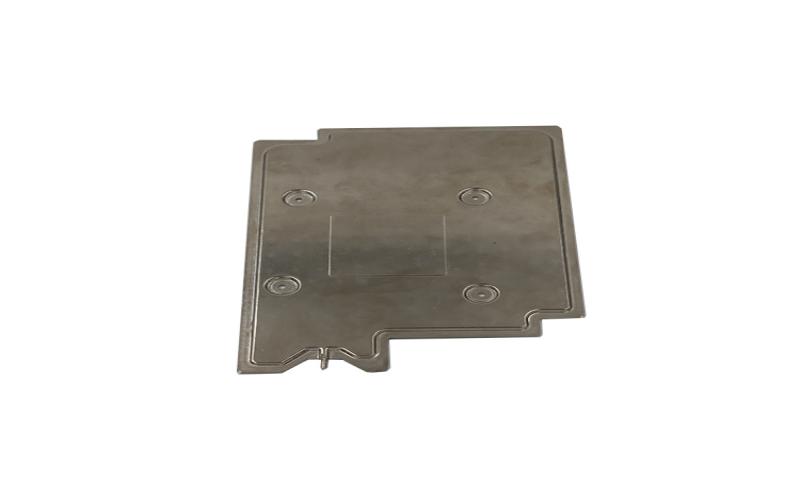Introduction
In the field of thermal management, Vapor Chambers (VCs) and Heat Pipes (HPs) have emerged as two popular solutions to dissipate heat from electronic devices and high-performance systems. While both VCs and HPs serve the same purpose, they differ in various aspects, including design, working principle, and performance. In this article, we will explore the differences between Vapor Chambers and Heat Pipes to help you make an informed decision when choosing the right cooling solution for your application.
Design and Structure between Vapor Chamber and Heat Pipe
Vapor Chambers and Heat Pipes feature distinct designs that influence their performance and applicability. A Vapor Chamber is a flat, sealed container made of copper or aluminum, with a wick structure and an inner surface coated with a capillary material. On the other hand, a Heat Pipe consists of a sealed copper or aluminum tube with an inner lining coated with a capillary material. The key difference lies in their shapes and the presence of a wick structure in a Vapor Chamber.
Working Principle between Vapor Chamber and Heat Pipe
Both Vapor Chambers and Heat Pipes utilize the principles of phase change and capillary action to transfer heat efficiently. In a Heat Pipe, heat is absorbed by the evaporator section, causing the working fluid inside to vaporize. The vapor then travels to the condenser section, where it condenses and releases the heat. The condensed fluid returns to the evaporator through capillary action. In a Vapor Chamber, heat is absorbed by the wick structure, which allows the working fluid to evaporate throughout the chamber. The vapor then condenses on the chamber walls, releasing the heat, and the condensed fluid returns to the wick structure through capillary action.
Heat Spreading Capability
One of the key advantages of Vapor Chambers over Heat Pipes is their superior heat spreading capability. Due to their larger surface area and wick structure, Vapor Chambers can distribute heat more evenly across their entire surface. This allows for more efficient heat dissipation and helps prevent hotspots. Heat Pipes, although effective at heat transfer, may struggle to provide uniform heat distribution, especially in applications with highly concentrated heat sources.
Thermal Resistance between Vapor Chamber and Heat Pipe
Thermal resistance is a crucial parameter when evaluating the performance of cooling solutions. In general, Vapor Chambers offer lower thermal resistance compared to Heat Pipes. The larger surface area of Vapor Chambers, combined with their ability to spread heat more evenly, leads to better overall thermal performance. However, it is important to note that the thermal resistance of both Vapor Chambers and Heat Pipes is influenced by various factors, such as the design, materials used, and operating conditions.
Weight and Size Considerations
When it comes to weight and size considerations, Heat Pipes have an advantage over Vapor Chambers. Heat Pipes are generally smaller and lighter, making them more suitable for applications with limited space or strict weight restrictions. Vapor Chambers, being larger and having a wick structure, may not be as compact or lightweight as Heat Pipes. Therefore, the choice between the two depends on the specific requirements of the application.
Manufacturing Complexity between Vapor Chamber and Heat Pipe
Manufacturing complexity is another aspect that differentiates Vapor Chambers and Heat Pipes. Vapor Chambers are more complex to manufacture compared to Heat Pipes due to their larger size, wick structure, and the need for vacuum sealing. Heat Pipes, on the other hand, have a simpler design and are relatively easier to manufacture. The complexity of manufacturing can impact the cost and availability of these cooling solutions.
Thermal Cycling Performance
Thermal cycling refers to the repeated heating and cooling cycles that a cooling solution may experience during normal operation. Both Vapor Chambers and Heat Pipes exhibit excellent thermal cycling performance, allowing them to withstand rapid temperature changes without degradation. However, Vapor Chambers, with their larger surface area and improved heat spreading capability, may offer slightly better thermal cycling performance compared to Heat Pipes.
Application Considerations
The choice between Vapor Chambers and Heat Pipes often depends on the specific application requirements. Vapor Chambers are generally preferred in high-power applications, such as gaming laptops, high-performance desktop computers, and servers, where efficient heat dissipation is critical. Heat Pipes, with their compact size and lower weight, are commonly used in mobile devices, aerospace applications, and other space-constrained systems.
Cost Considerations
Cost is a crucial factor in any engineering decision. In terms of cost, Heat Pipes are generally more affordable than Vapor Chambers. The simpler design and easier manufacturing process of Heat Pipes contribute to their lower cost. Vapor Chambers, being larger and more complex, tend to be more expensive. However, the cost difference may vary depending on the specific requirements and quantities needed.
Conclusion
Both Vapor Chambers and Heat Pipes offer effective heat transfer solutions for various thermal management needs. While Vapor Chambers excel in heat spreading capability and overall thermal performance, Heat Pipes offer advantages in terms of size, weight, and cost. Choosing between Vapor Chambers and Heat Pipes requires careful consideration of the application requirements and trade-offs. By understanding the differences outlined in this article, you can make an informed decision to optimize the cooling solution for your specific needs.

